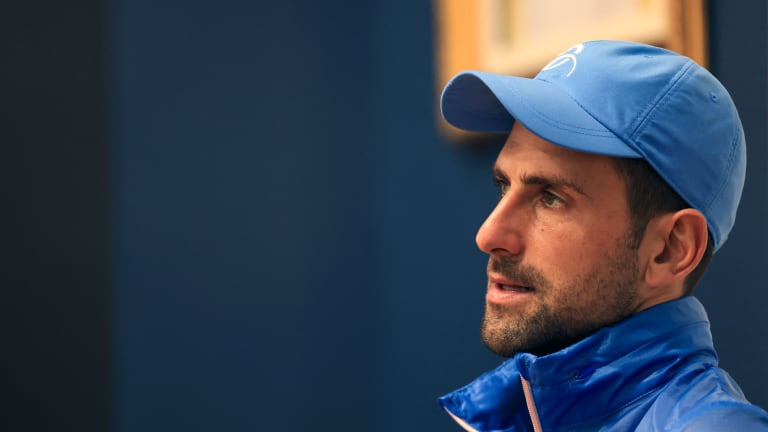Tennis.com Interview
What Novak Djokovic and the PTPA believe they can do to help tennis players (Part 3 of 3)
By Dec 20, 2023Tennis.com Interview
Jan-Lennard Struff sees Munich title defense bid as 'perfect opportunity' to turn 2025 around
By Apr 14, 2025Tennis.com Interview
Lorenzo Musetti manifested his 'special' week in Monte Carlo with first Masters 1000 final
By Apr 12, 2025Tennis.com Interview
No logic, just a feeling: Andrey Rublev "always knew" he wanted to work with Marat Safin
By Apr 07, 2025Tennis.com Interview
Brad Gilbert, Patrick McEnroe weigh in on U.S. men's tennis evolution
By Apr 05, 2025Tennis.com Interview
Patrick McEnroe decries Jannik Sinner suspension, tags Joao Fonseca as future star
By Apr 04, 2025Tennis.com Interview
On chicken farm, Danielle Collins embraces “crunchy granola lifestyle”
By Apr 03, 2025Tennis.com Interview
Feeling like a teenager, Alizé Cornet, 35, makes triumphant comeback from retirement
By Apr 02, 2025Tennis.com Interview
Danielle Collins launches iconic richsport merch collab
By Mar 07, 2025Tennis.com Interview
Zizou Bergs: From TikTok to Top 50 in Indian Wells?
By Mar 06, 2025Tennis.com Interview
What Novak Djokovic and the PTPA believe they can do to help tennis players (Part 3 of 3)
Djokovic "means it when he says he just wants to make things better for tennis and the players," says Ahmad Nassar, executive director of the Professional Tennis Players Association.
Published Dec 20, 2023
Advertising

"You can see on social media that we do a lot of comparing and explaining what other player associations do," says Nassar, "to make the point that tennis players should have something similar."
© Getty Images for PTPA
Advertising
Advertising

Novak Djokovic has been the leading face of the PTPA from its inception.
© AFP via Getty Images